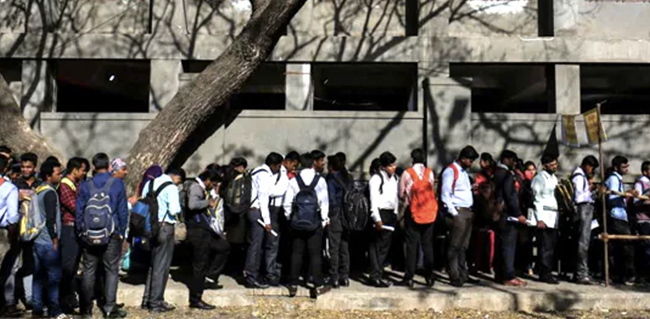2024-05-15 19:29:32

Unemployment rate is defined as percentage of unemployed people in labour force. (Representational)
New Delhi:
The unemployment rate for people aged 15 years and above in urban areas declined to 6.7 per cent in the January-March period from 6.8 per cent a year ago, according to the National Sample Survey (NSSO).
Joblessness, or unemployment rate, is defined as the percentage of unemployed people in the labour force.
The unemployment rate in the March quarter of FY23 was 6.8 per cent, while it was 6.6 per cent in April-June as well as in the third quarter (July-September 2023) of the previous fiscal. It was 6.5 per cent in October-December 2023.
The unemployment rate for people aged 15 years and above in January-March 2024 was 6.7 per cent in urban areas, the 22nd Periodic Labour Force Survey (PLFS) showed.
It also showed that the unemployment rate among females (aged 15 years and above) in urban areas declined to 8.5 per cent in January-March 2024 from 9.2 per cent in the same quarter a year ago.
It was 9.1 per cent in April-June 2023, 8.6 per cent in July-September 2023, and 8.6 per cent in October-December 2023.
Among males, the unemployment rate in urban areas rose to 6.1 per cent in January-March 2024 compared to 6 per cent in the year-ago period. It was 5.9 per cent in April-June 2023, 6 per cent in July-September 2023, and 5.8 per cent in October-December 2023.
Labour force participation rate in Current Weekly Status (CWS) in urban areas for people aged 15 years and above increased to 50.2 per cent in the January-March 2024, from 48.5 per cent in the same period a year ago.
It was 48.8 per cent in April-June 2023, 49.3 per cent in July-September 2023 and 49.2 per cent in October-December 2023.
Labour force refers to the part of the population, which supplies or offers to supply labour for pursuing economic activities for the production of goods and services and, therefore, includes both employed and unemployed persons.
The NSSO launched PLFS in April 2017.
On the basis of PLFS, a quarterly bulletin is brought out giving estimates of labour force indicators namely unemployment rate, worker population ratio (WPR), labour force participation rate (LFPR), distribution of workers by broad status in employment and industry of work in CWS.
The estimates of unemployed persons in CWS give an average picture of unemployment in a short span of seven days during the survey period.
In the CWS approach, a person is considered unemployed if he/she did not work even for one hour on any day during the week but sought or was available for work at least for one hour on any day during the period.
Labour force, according to CWS, is the number of persons either employed or unemployed on average in a week preceding the date of the survey. LFPR is defined as the percentage of the population in the labour force.
(Except for the headline, this story has not been edited by NDTV staff and is published from a syndicated feed.)
Unemployment,unemployment Data in india,Unemployment rate
Source link
![]()
